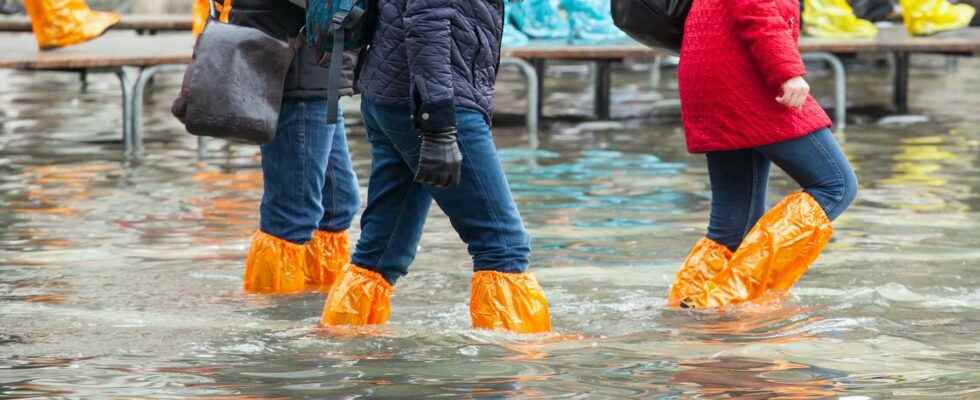With global warming, extreme weather events tend to increase and intensify. Including in France. And while awaiting the publication of the second part of the sixth report of the IPCC, the Intergovernmental Panel on Climate Change, devoted to the consequences of climate change, the Covéa insurance group has looked into the question. It publishes a white paper detailing the risks by 2050.
You will also be interested
[EN VIDÉO] What caused the tragic floods in Europe? Catastrophic floods that hit Germany, Belgium and the Netherlands in July killed more than 150 people. Is there a link with global warming?
This Monday, February 28, 2022, the Intergovernmental Group of Experts on the Evolution of the weather (IPCC) will make public the second part of its sixth assessment report. A section devoted to consequences that global warming will have on humanity. At its level, the Covéa insurance group – which brings together MAAF, MMA and GMF in particular – has just published a White Book which gives an idea of what we should expect in the matter for France. And especially when it comes to extreme weather events.
Torrential flooding on the Côte d’Azur, thunderstorms diluvial over the Cannes region, exceptional flooding of the Seine, passage of cyclones category 5 in Saint-Martin and Saint-Barthélémy. Since 2015, our country has already experienced a marked increase in claims – including losses – linked to natural events. And with global warming looming, the situation will not improve.
An increased risk of flooding
First major risk identified by Covéa experts for France: floods. The so-called slow floods – the result of heavy and long-lasting rains that cause the debits watercourses – will thus increase, particularly over a large northeast quarter and in the south of the country, where an increase of more than 30% is expected. The loss ratio linked to this phenomenon should, for its part, increase by 110% by 2050. Torrential floods – the result of intense and brief rains – will also increase. Thanks, for example, to today’s decadal rainfall which will occur in the future every 4.5 years. Result: a 130% increase in claims due to floods lightning and associated runoff. Knowing that already, between 1982 and 2020, nearly 22 billion euros have been paid in total to compensate the victims offloods in France.
A drought risk that is also increasing
The work carried out by Covéa’s experts shows that the droughts will increase all over the country. And this, whatever the season. But it’s the “clayey crescent” – include the Paris Basin, Hauts-de-France and Centre-Est – which should be the most affected. Severe episodes could even show a 70% increase by 2050. Leading to an increase in claims of around 60%. Between 1989 and 2020, more than 15 billion euros have been paid to compensate victims of drought in the country.
Intensifying hail
Regarding hail episodes, the work of Covéa experts shows that by 2050, the same territories will still be impacted. But others may begin to be affected. With above all, stormy hailstorms that will increase by more than 40%. Raising the loss ratio by around 20%.
No more storms
The storms, for their part, should not undergo any significant change in the coming decades. Neither concerning their frequency nor concerning their intensity.
And we should finally expect, by 2050, an overall increase in claims due to extreme meteorological phenomena of around 60%.
Interested in what you just read?
